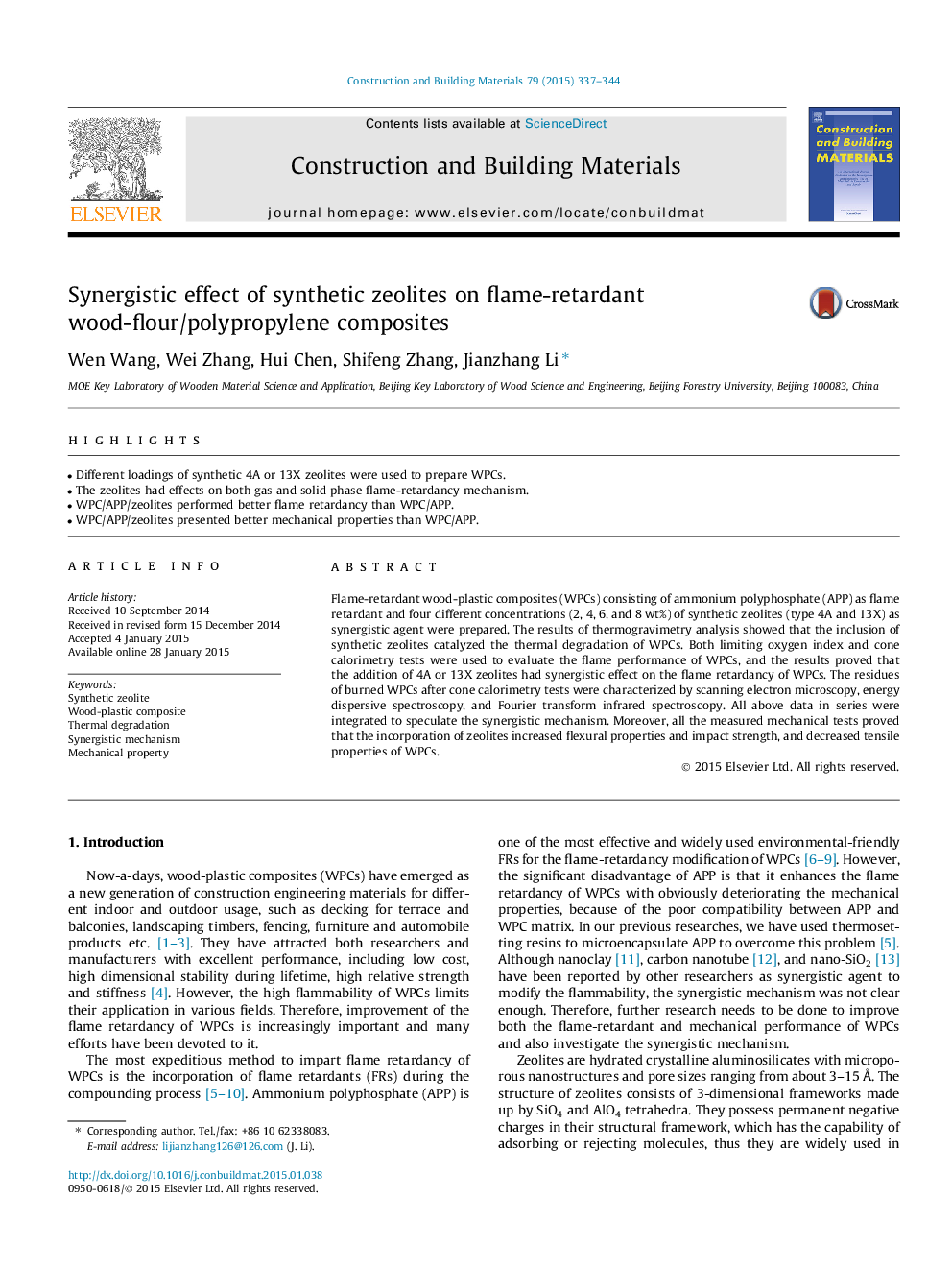| Article ID | Journal | Published Year | Pages | File Type |
|---|---|---|---|---|
| 257206 | Construction and Building Materials | 2015 | 8 Pages |
•Different loadings of synthetic 4A or 13X zeolites were used to prepare WPCs.•The zeolites had effects on both gas and solid phase flame-retardancy mechanism.•WPC/APP/zeolites performed better flame retardancy than WPC/APP.•WPC/APP/zeolites presented better mechanical properties than WPC/APP.
Flame-retardant wood-plastic composites (WPCs) consisting of ammonium polyphosphate (APP) as flame retardant and four different concentrations (2, 4, 6, and 8 wt%) of synthetic zeolites (type 4A and 13X) as synergistic agent were prepared. The results of thermogravimetry analysis showed that the inclusion of synthetic zeolites catalyzed the thermal degradation of WPCs. Both limiting oxygen index and cone calorimetry tests were used to evaluate the flame performance of WPCs, and the results proved that the addition of 4A or 13X zeolites had synergistic effect on the flame retardancy of WPCs. The residues of burned WPCs after cone calorimetry tests were characterized by scanning electron microscopy, energy dispersive spectroscopy, and Fourier transform infrared spectroscopy. All above data in series were integrated to speculate the synergistic mechanism. Moreover, all the measured mechanical tests proved that the incorporation of zeolites increased flexural properties and impact strength, and decreased tensile properties of WPCs.
